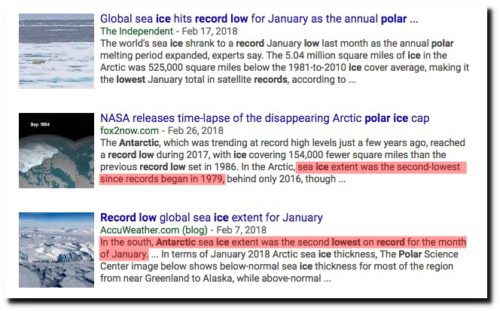 Here’s a polar bear habitat update for early March: some folks are wringing their hands over the relative extent of ice this season but ice maps show that as far as polar bear habitat is concerned, conditions are not materially different this year from what they were in 2006 or 2017.
Here’s a polar bear habitat update for early March: some folks are wringing their hands over the relative extent of ice this season but ice maps show that as far as polar bear habitat is concerned, conditions are not materially different this year from what they were in 2006 or 2017.
There is still plenty of late winter sea ice for polar bears needing a platform from which to hunt Arctic seals, which in some areas will have already begun giving birth to their fat furry pups (harp seals first, other species later).
The MASIE map for 5 March 2018 (Day 64) shows ice extent at 14.5 mkm2:
Here is the map for 2006 on the same date (5 March 2006, Day 64, also 14.5 mkm2), with no evidence that this level of late winter sea ice had any negative impact on polar bear health or survival (one example, from Svalbard, here):
Last year (5 March 2017, Day 64) at this time was similar, with a bit more ice (14.8 mkm2), primarily in the Bering Sea:
And while the extent of February may have been the lowest since 1979, it wasn’t by much:
And despite the pessimism from some quarters, there is no evidence that less than 15 mkm2 of sea ice in February in recent years has had a negative impact on polar bears (if you find any, let me know and I’ll update this post):
February 2018 Arctic sea ice continued the downward trend at a loss rate of 47,000 sq. km/year (18,000 sq. miles/year) or 3.1%/ decade. Not a big surprise when parts of the Arctic are 15 C above normal. https://t.co/Snd58f0DBK Ongoing habitat loss for #polarbears. pic.twitter.com/u5OU5eGzfc
— Andrew Derocher (@AEDerocher) March 6, 2018
Read more at Polar Bear Science




















